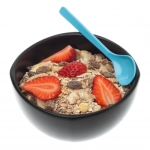Lower Cholesterol at Every Meal, Every Day
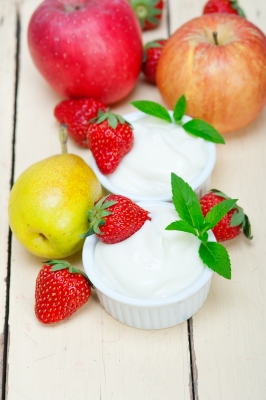
High cholesterol levels increase your risk for heart disease. Felicia D. Stoler, DCN, the author of “Living Skinny in Fat Genes”, shares some fresh ideas on how you can lower cholesterol at every meal.
Lisa Nelson RD: We can now find many grocery options with “cholesterol free” labeling. What does “cholesterol free” mean?
Dr. Stoler: In a nutshell, a food that says it is “cholesterol free” means it has NO animal products in it. It’s a bit misleading… for example, apples can say they are “cholesterol free”.
Lisa Nelson RD: Should consumers disregard “cholesterol fee” labeling? If so, what should they look at instead when selecting heart healthy products?
Dr. Stoler: I always tell people to look at calories, fiber, and fat. If it’s a food that has fiber, does it have the most (across brands) fiber per serving. When it comes to fat, does it have lower fat than other comparable products?
Lisa Nelson RD: What are some great breakfast tips to promote lower cholesterol levels?
Delay Onset of High Cholesterol by Maintaining Fitness
 According to a study published in the Journal of the American College of Cardiology, being regularly active delayed age-related cholesterol increases in men by up to 15-years.
According to a study published in the Journal of the American College of Cardiology, being regularly active delayed age-related cholesterol increases in men by up to 15-years.
Research indicates high cholesterol is a risk factor for heart disease. Regular physical activity can reduce this risk. Being physically fit reduces arterial build-up by lowering LDL cholesterol levels while increasing HDL cholesterol. It also lowers other risk factors for atherosclerosis and blood clots, such as diabetes, obesity, high blood pressure, and stress.
Cholesterol: “Not a Nutrient of Concern”
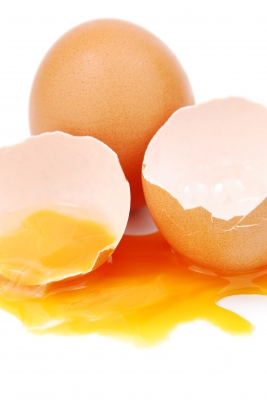 The Dietary Guidelines for Americans are updated every five years by the Department of Agriculture (USDA) and the Department of Health and Human Services (HHS). The first edition was released in 1980 with the 7th edition released in 2010 (Dietary Guidelines for Americans). This means the 8th edition will be released this year.
The Dietary Guidelines for Americans are updated every five years by the Department of Agriculture (USDA) and the Department of Health and Human Services (HHS). The first edition was released in 1980 with the 7th edition released in 2010 (Dietary Guidelines for Americans). This means the 8th edition will be released this year.
There is a Dietary Guidelines Advisory Committee (DGAC) consisting of recognized experts in nutrition and public health. This committee reviews the latest research and provides the USDA and HHS Secretaries with evidence-based recommendations.
On February 19, 2015, the DGAC released its recommendations — the Advisory Report.
In the report, the DGAC stated cholesterol is not a nutrient of concern for over consumption.
This would mean eliminating the 2010 guideline recommending cholesterol intake be limited to 300 mg per day or less. The average American cholesterol intake is 340 mg daily.
This recommendation is consistent with new guidelines from the American Heart Association and American College of Cardiology, but has still caused significant debate on the impact if dietary cholesterol guidelines are removed.
What are some concerns being debated?
Continue reading
Moms and dads: Are your children getting enough fiber?
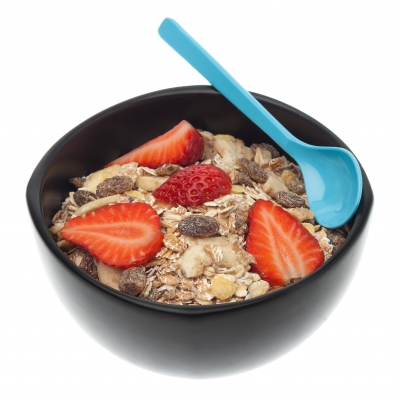 From keeping our immune system functioning to bowel regularity, our digestive systems do a lot for our everyday health.
From keeping our immune system functioning to bowel regularity, our digestive systems do a lot for our everyday health.
Dietary fiber as a regular part of your diet will promote lower cholesterol levels and improved heart health. Most of us consume about half of the fiber our bodies need to function correctly.
If we include fiber in the diets of our children now, we can make it a natural habit they continue into adulthood.
I asked registered dietitian Felicia D. Stoler, DCN, how parents can get inventive about ways to increase our family’s fiber intake. Stoler is the former host of TLC’s “Honey, We’re Killing the Kids,” and author of “Living Skinny in Fat Genes.”
Lisa Nelson, RD: How much fiber do we need?
Dr. Stoler: “Toddlers ages 1-3 need 19 grams of fiber daily. Children ages 4-8 years need 25 grams, about the same as adult women. Teenage boys and adult men should aim for 38 grams per day. That fiber requirement probably won’t be met by eating fast food. “A four-piece serving of chicken nuggets has just one gram of fiber. A six-inch turkey breast deli sandwich only has three grams.”
Lisa Nelson, RD: How do you get around the idea that a high-fiber diet means piling plates high with vegetables?
Dr. Stoler: “Sometimes playing ‘hide the fiber’ is the best way to improve a family’s nutrition.”
Lisa Nelson, RD: Can you give me some examples?
Dr. Stoler: “I’m always tossing ground flax seed into foods. One of my favorite tips is to use it as a thickener for tomato sauce or soup. Serving a lot of side dishes is a great way to load up on vegetables or grain-based foods. Along with a main course of poultry or fish, I prepare a lot of side dishes with beans, lentils and multiple grains. For flavor and color this time of year, toss in some cranberries.”
Lisa Nelson, RD: What about giving the family a high-quality fiber supplement?
Dr. Stoler: “I keep Sunfiber on the kitchen counter so it’s very convenient while I’m cooking. Since it’s odorless, tasteless and mixes easily into just about anything, it’s routinely my secret ingredient in a lot of foods from pancakes, waffles and muffins to chili, soup and yogurt. One scoop adds six grams of fiber, which is significant. It also helps support your family’s bone health because it supports better calcium and magnesium absorption.”
Lisa Nelson, RD: How can you add more fiber to kids’ party foods, especially if the event is at someone else’s home?
Dr. Stoler: “Offer to bring a snack for fall get-togethers. Kids go crazy for fruit kabobs. Just thread fresh melon balls onto wooden skewers. Then flip over half of the empty melon shell, and stick the skewers into it for a festive presentation. If you’re short on time, buy the pre-cut melon and stick the skewers in a Styrofoam ball from the craft store or invert a colander. When fruit is presented in an enticing way, people want to eat it.”
Lisa Nelson, RD: Do you have other creative tricks for getting kids to eat healthier?
Dr. Stoler: “Make sure plates are filled with colorful foods. Food that’s appealing stands a greater chance of getting eaten. Use cookie cutters to cut sandwiches made with high-fiber bread. Use a vegetable peeler to cut carrots or cucumbers into ribbons. Experiment with cutting other vegetables into fun shapes.”
Lisa Nelson, RD: What do you suggest for a high-fiber, family dessert?
Dr. Stoler: “Dress up fruits for dessert. The beauty of high-fiber desserts is that they fill you up, especially if you slow down and savor each bite. So you won’t be as tempted to over-indulge. Frozen grapes are fun and easy. Fruit cobblers are also a good choice for chillier evenings, especially if you sprinkle some Sunfiber into the mixture before baking. Making it with an oatmeal topping will add even more fiber and nutrients.”
Lisa Nelson, RD: Do you have any other suggestions for parents to encourage their kids to start eating more vegetables?
Dr. Stoler: “Include your children in creating menus, grocery shopping, gardening, setting the table and food preparation. “This may not only broaden their interest in trying different foods, it can also teach them important life skills around food such as budgeting money and time management skills. Passing on your knowledge will help them to be great parents!”
Dr. Stoler adds that Sunfiber, which she referenced, is well researched for its health benefits. Those studies are available at www.Sunfiber.com.
You can also access the free ecourse How to Lower Cholesterol in 8 Simple Steps at http://lowercholesterolwithlisa.com.
All the best,
Lisa Nelson RD
Image courtesy of phasinphoto / FreeDigitalPhotos.net
Use Beans to Lower Cholesterol in Just 3 Weeks
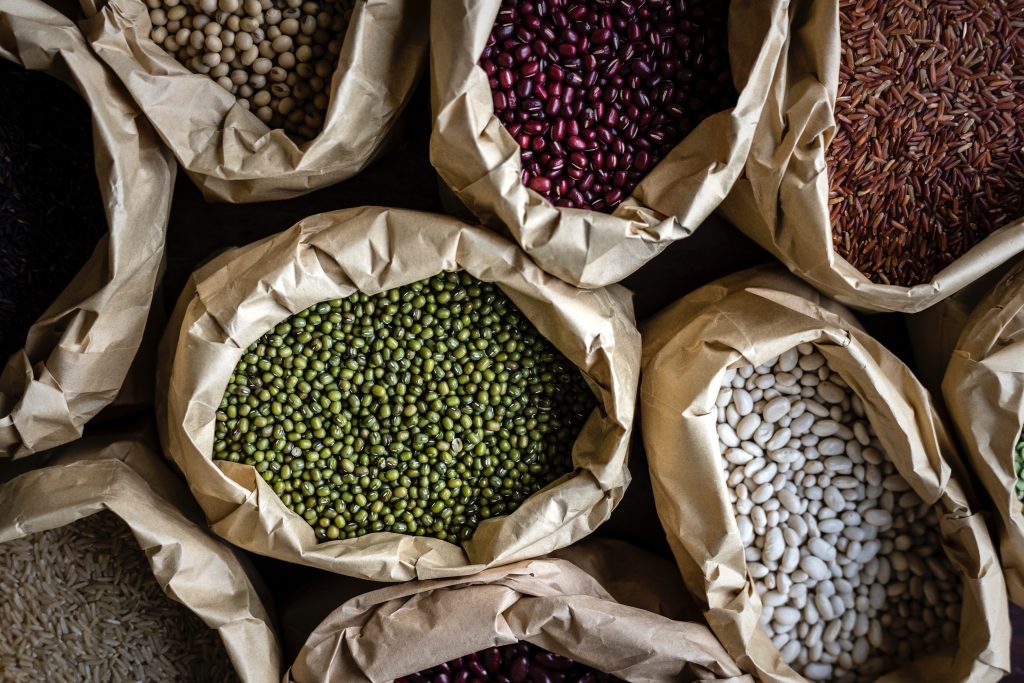
More than one study has supported the effectiveness of dry beans to lower cholesterol levels. A meta analysis released in the Canadian Medical Association Journal analyzed the results of twenty-six randomized controlled trials lasting at least three weeks in duration.
The findings conclude that consuming a diet that includes beans, chickpeas, lentils, and peas does lower low density lipoprotein (LDL) cholesterol levels.
How much must you eat?
The diets in the analyzed studies consumed an average of 130 g/day. This would be equal to about 1 serving of beans, chickpeas, lentils, and peas. One serving is equal to ½ cup of kidney beans, pinto beans, or chickpeas.
Study participants who consumed ~1/2 cup servings of beans every day for a 3 week period of time had an average reduction in LDL cholesterol levels of 6.5 mg/dL.
Imagine the potential improvement in levels if consumed over a longer period of time. An easy and effective way to promote healthy cholesterol levels.
High Fructose Corn Syrup or Table Sugar: Which is Better?

Do you think of honey or agave nectar as being more “natural” than other types of sweeteners? You might be surprised to learn that most sweeteners go through very similar forms of processing.
High fructose corn syrup, fruit juice concentrate, table sugar (sucrose), and agave nectar all undergo extraction, filtration, enzyme treatment, and concentration.
Since processing methods are similar between these types of sweeteners, don’t assume you need to select one over another because one is more “natural” or less processed.
Digestion and Absorption of Table Sugar vs. High Fructose Corn Syrup
The molecular structure of table sugar (sucrose) and high fructose corn syrup do differ; however, this difference is eliminated in the small intestine when the glucose-fructose bond in sucrose is broken. Therefore, once the two sweeteners reach the blood stream any difference has been eliminated.
When they reach the blood stream they are providing the same sugars at the same ratios to the same tissues/organs within the same time frame.
Despite the similarity in digestion and absorption, media coverage might have you questioning potential health concerns related to fructose and high fructose corn syrup. This steams from the possibility of small percent, ~3-5%, of fructose being converted to fatty acids in the liver.

